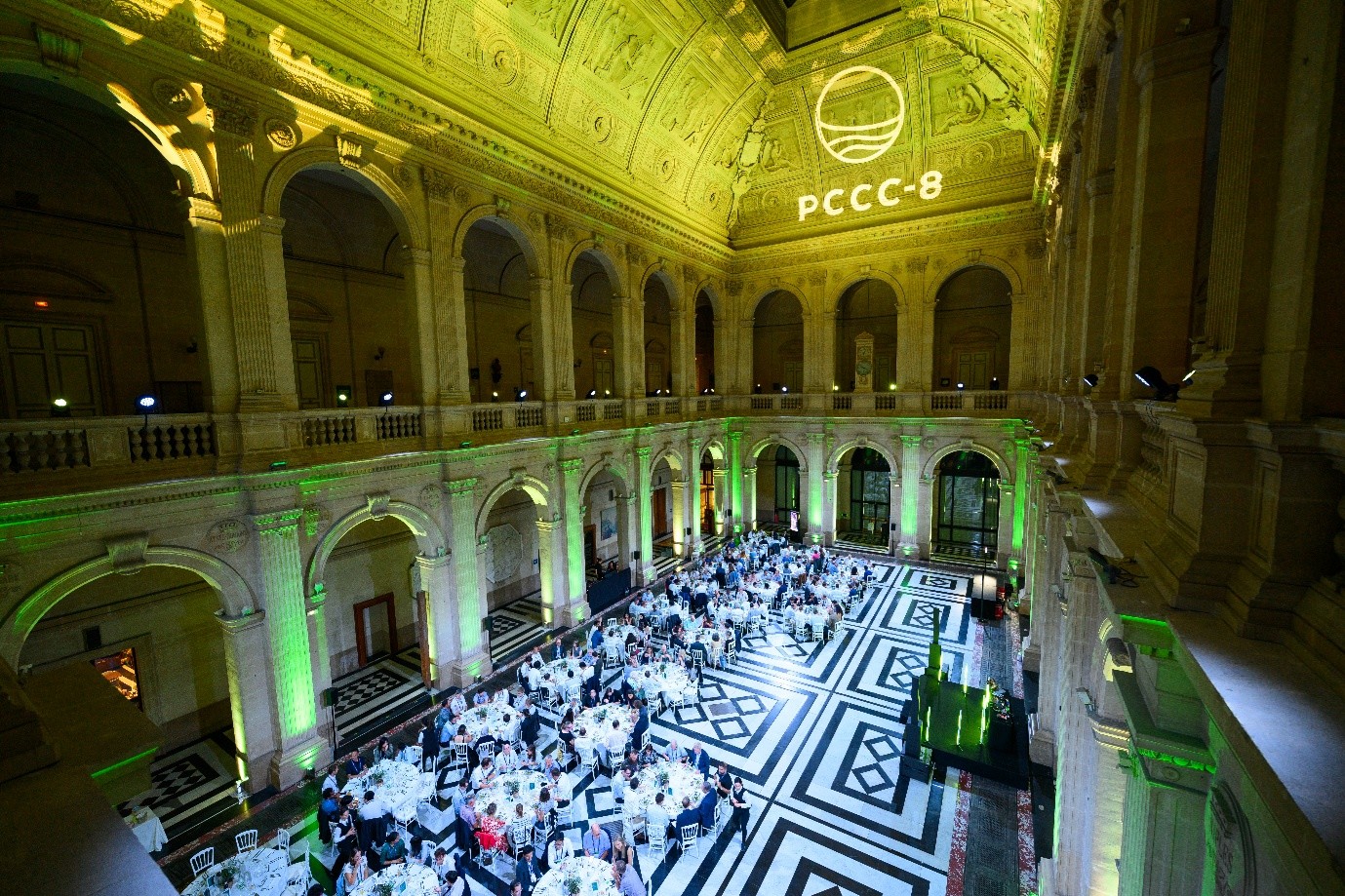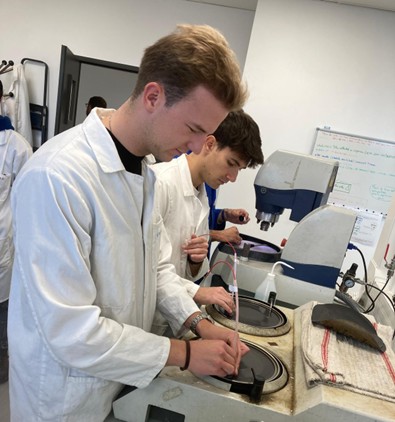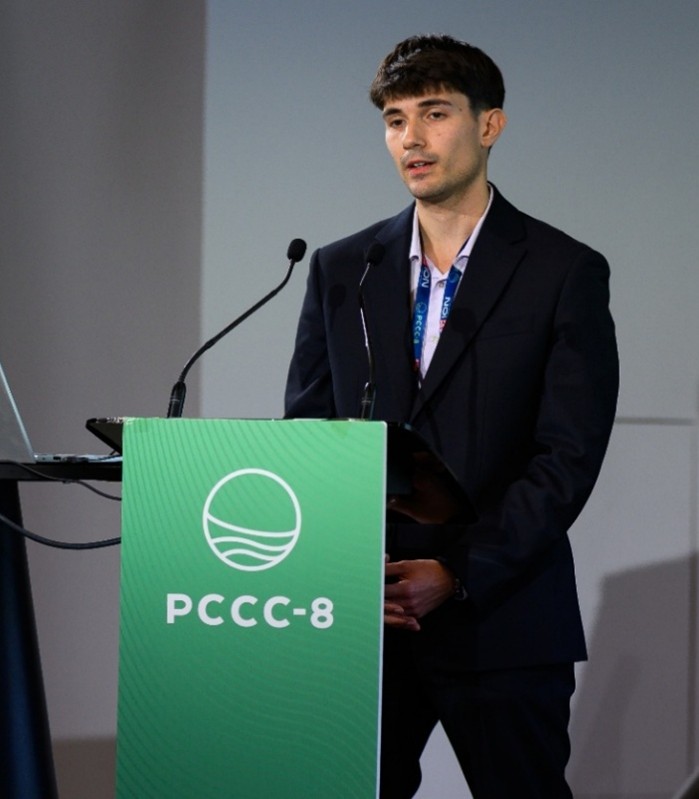France is a country I never had the chance to visit and this September I was lucky enough to spend two exciting weeks there, as part of my PhD. This trip had me attending both a conference in Marseille and a corrosion training program organised at INSA Lyon.
Catching up with CO2 capture
The first week took me to Marseille for the 8th Post-Combustion Capture Conference (PCCC-8), a major event in the field of carbon capture, organized by the IEA Greenhouse Gas R&D Programme (IEAGHG). Attending this conference was a real privilege as it provided the opportunity to strengthen my grasp on many already familiar aspects within CO2 capture, through highly technical sessions. Seeing solvent degradation receive a lot of attention was particularly exciting for me, since this is the main focus of my research. I also had the chance to present my own work during one of the sessions, where I shared my first experimental results on the evaluation of potassium iodide’s effect on ethanolamine degradation.

CO2 capture through absorption, primarily utilizes amine solvents which tend to degrade due to oxidation and exposure to high temperatures. Overtime degradation can worsen the performance of the solvent, reducing its CO2 capturing capacity. In addition, degradation products can be difficult to monitor and make emission control and corrosion prevention very challenging. One potential way to combat degradation is by adding an inhibitor, or in other words a compound that can prevent solvent oxidation through various chemical interactions.
Many compounds have been tested as potential inhibitors over the years and potassium iodide (KI) was among the most promising. KI can help stabilize ethanolamine solvent at absorber conditions, however exposure to higher temperatures seems to significantly decrease its effectiveness. While the exact inhibition mechanism of KI is still not fully understood, I believe it remains a promising candidate worth investigating further. Currently I am conducting a series of experiments focused on monitoring the inhibitor’s effect on oxidative and thermal degradation at different conditions. Results have already revealed some interesting changes in interactions between degradation products, however there is still a long way to go to before we can conclude on the inhibitor’s effectiveness.
The anticipation of my first conference presentation was quite stressful, especially knowing that the audience would include many of the researchers whose work had guided much of my learning so far. Of course, in the end it turned out to be a truly rewarding experience as later feedback and discussions gave me new ideas for the next steps in my research.

After the conference, I had the chance to spend an extra day in Marseille, where the beautiful scenery, and lively atmosphere offered me the opportunity to relax. Walking along the harbor, taking in the nice views, and enjoying some local food was a wonderful way to wrap up an intense week at the conference, before the next part of my trip.

Corrosion insights at INSA Lyon
Although the weather in Marseille had me regretting not packing a swimsuit, on the train ride to Lyon, I was already looking for my raincoat. Still, that didn’t make my second week any less pleasant, and to be honest the views were just as good.

Arriving at INSA, I met up with Ward (DCR 2) as we both joined Bunmi, Proneet, Benedetta and Ettore (DCRs at INSA) for a week-long training program, focused on corrosion monitoring. We started off with a revisit to electrochemistry fundamentals and an introduction to key topics such as corrosion types and passive film formation. As the week progressed, we covered a variety of corrosion monitoring and management techniques and even got some hands-on experience in the lab, where we ground our own metal samples and measured their pitting potential through cyclic polarization tests. Surely enough, a week of lectures and experiments, no matter how intense, does not turn you into a corrosion expert. That being said, the training provided a lot of valuable insights and showed me where I should look next, to better understand the relationship between solvent degradation and corrosion.

Attending this program alongside the other PhDs, also gave the chance to catch up on everyone’s progress and exchange ideas for potential collaborations. It was a great opportunity to step outside my own research focus for a bit and see how our individual projects connect within the broader scope of MISSION-CCS.
Looking back, I am very grateful for all the knowledge and experiences I gathered during these two weeks and I’m excited to see where research leads me next.

This article was written by Georgios Oikonomou as part of a series curated by the MISSION-CCS’s Doctoral Candidate Researchers.
Georgios is one of MISSION-CCS’s Researchers working at NTNU in Norway. His project focuses on experimental monitoring of amine degradation during CO2 capture and the evaluation of inhibitor utilization as a potential mitigation technique.
LinkedIn: https://www.linkedin.com/in/georgios-oikonomou-02b710274/